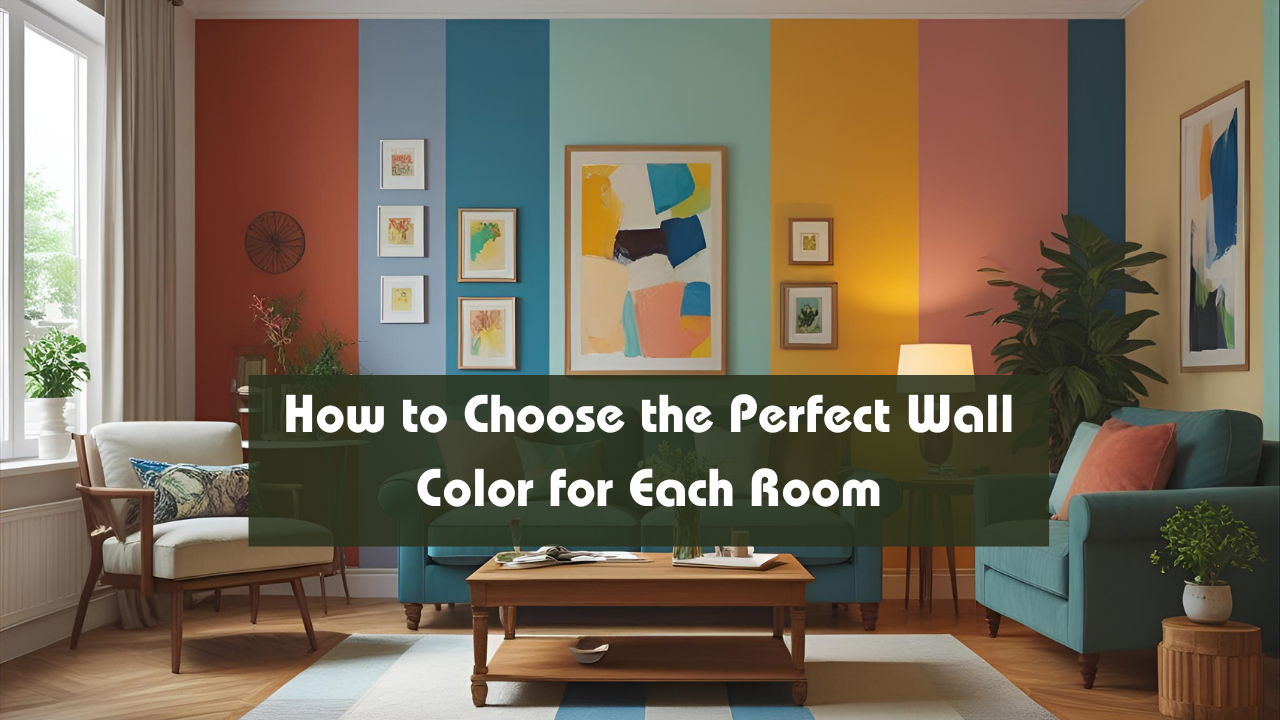Wall color isn’t just about aesthetics—it shapes mood, productivity, and how spacious or cozy your room feels. Picking the perfect paint color for each room may seem overwhelming, but with a strategic approach, you can create a cohesive, vibrant, and mood-enhancing environment throughout your home. This guide breaks it all down, room by room, helping you make informed and stylish choices.
Overview: How to Choose the Perfect Wall Color for Each Room
| Room Type | Recommended Color Tones | Mood Created | Ideal Finish | Lighting Impact | Bonus Tip |
|---|---|---|---|---|---|
| Living Room | Warm Neutrals, Earthy | Welcoming, Cozy | Eggshell | Reflects natural light | Use an accent wall |
| Bedroom | Soft Blues, Pastels | Calming, Peaceful | Matte | Creates restful mood | Avoid high-gloss finishes |
| Kitchen | Bright Whites, Light Yellows | Clean, Energetic | Satin | Enhances brightness | Coordinate with cabinets |
| Bathroom | Aqua, Seafoam Green | Fresh, Spa-like | Semi-gloss | Amplifies natural light | Resists humidity |
| Home Office | Greys, Muted Greens | Focused, Balanced | Eggshell | Reduces glare | Use warm lights for comfort |
| Kids’ Room | Bright Colors, Themed | Fun, Stimulating | Washable Matte | Stimulates creativity | Involve children in choosing |
Detailed Information
1. Living Room: Set the Tone for Your Home
The living room is where you relax and host guests, so the color should feel warm and inviting. Choose from shades like beige, taupe, soft greys, or warm whites. These colors work beautifully with various furniture styles and complement both natural and artificial lighting.
Tips:
- Use eggshell finish for easy cleaning and a soft sheen.
- Try an accent wall in a darker or contrasting color for a designer touch.
2. Bedroom: Create a Peaceful Retreat
For restful sleep and relaxation, your bedroom should promote calmness. Go for soft hues like light blues, lavender, or blush pinks. These tones are proven to lower stress and encourage tranquility.
Tips:
- Use matte or flat finishes to reduce glare and add softness.
- Avoid bold or high-energy colors like red or bright orange.
3. Kitchen: Keep It Fresh and Energized
The kitchen benefits from light-reflecting colors like creamy white, pale yellow, or mint green. These create a sense of cleanliness and energy.
Tips:
- Use satin finishes that are durable and easy to wipe down.
- Coordinate the wall color with cabinet tones and countertops for a harmonious look.
4. Bathroom: Turn It Into a Spa-Like Escape
Bathrooms are ideal for refreshing, watery hues like aqua, seafoam green, or powder blue. These make small spaces feel open and luxurious.
Tips:
- Use semi-gloss paint that resists moisture and is easy to clean.
- Enhance natural light with lighter tones.
5. Home Office: Focus and Productivity
The home office should balance energy and calm. Neutral greys, soft greens, and beige help maintain focus while reducing screen glare.
Tips:
- Eggshell finishes offer a clean look without reflecting too much light.
- Incorporate natural light with warm, adjustable lighting to reduce eye strain.
6. Kids’ Rooms: Stimulate and Delight
Children’s spaces benefit from creativity and fun. Choose bright, stimulating shades like teal, sunny yellow, or themed palettes like ocean blue or jungle green.
Tips:
- Use washable matte paint to handle spills and scribbles.
- Let kids help choose the color—they’ll feel more connected to their space.
Lighting Matters
Natural light brings out the truest color, so test swatches on your walls during different times of day. Artificial lighting—like warm vs. cool bulbs—can dramatically alter how a paint color appears.
Bonus Table: Finish Guide by Room
| Room | Suggested Finish |
|---|---|
| Living Room | Eggshell |
| Bedroom | Matte |
| Kitchen | Satin |
| Bathroom | Semi-gloss |
| Office | Eggshell |
| Kids’ Room | Washable Matte |
Conclusion
Choosing the right wall color isn’t just about trends—it’s about crafting a mood that supports your lifestyle. Consider each room’s function, lighting, and who uses it. Don’t rush—sample paints on your wall and observe them at different times of the day. With the right colors, your home will feel more like you.
FAQ’s
Q: Which color is best for small rooms?
Light colors like white, pale grey, or soft blue make small rooms appear larger.
Q: Should I use the same color throughout the house?
Not necessarily—tailoring color to each room’s purpose creates better mood alignment.
Q: How do I test a paint color before committing?
Apply swatches on different walls and observe them in both natural and artificial light.

